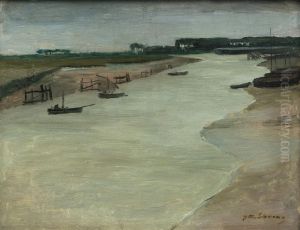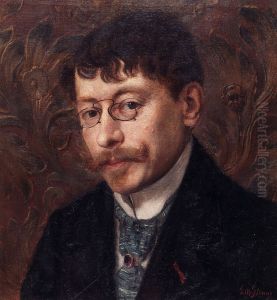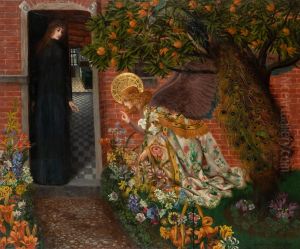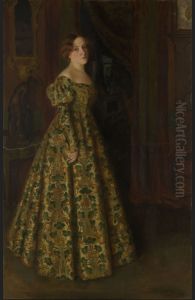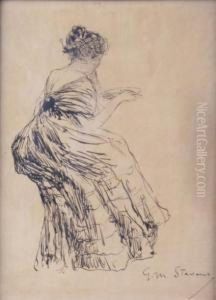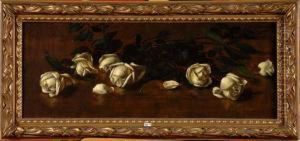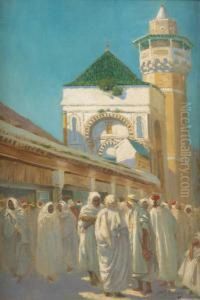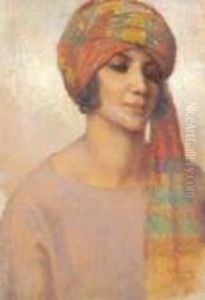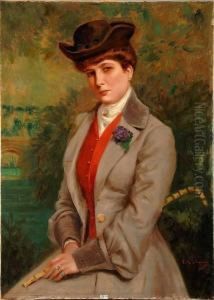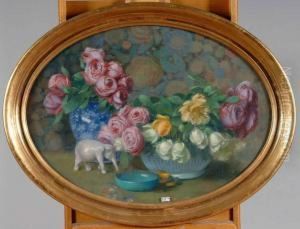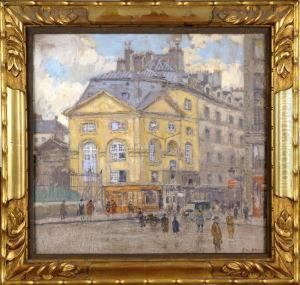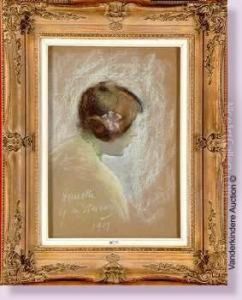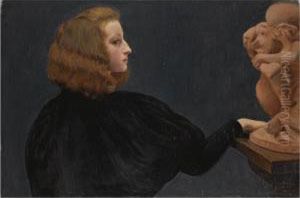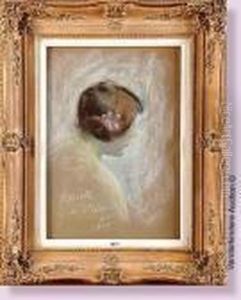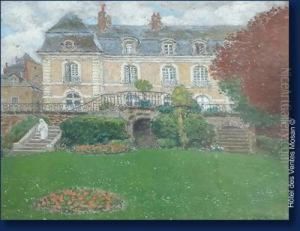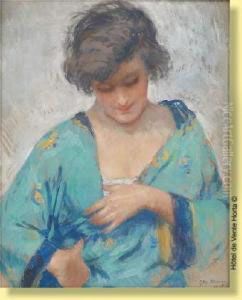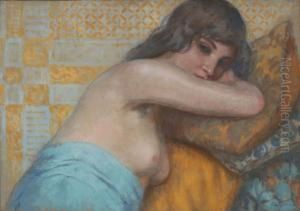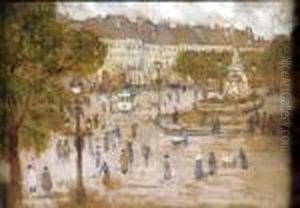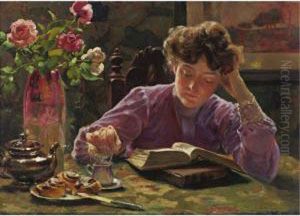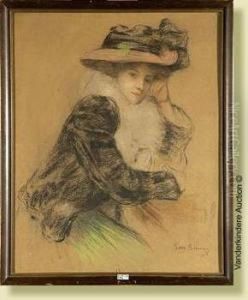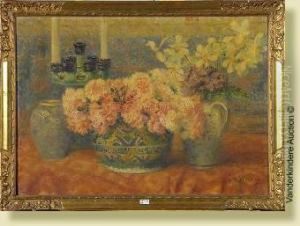Gustave Max Stevens Paintings
Gustave Max Stevens was a Belgian artist born on August 1, 1871, in Brussels. He is known for his work as a painter, engraver, and illustrator. Stevens came from a family with artistic interests; his father was an art critic, which likely influenced his early exposure to the art world. Stevens studied at the Académie Royale des Beaux-Arts in Brussels, where he honed his skills in painting and developed a keen interest in the arts of engraving and etching.
During the late 19th and early 20th centuries, Stevens became part of the Symbolist movement, which was characterized by its use of symbolic imagery and mythological themes to express emotional experiences and ideas. His works often featured allegorical and dream-like elements that explored themes of love, death, and the human psyche. Stevens' Symbolist contemporaries included artists like Fernand Khnopff and Jean Delville, with whom he shared aesthetic sensibilities.
In addition to his painting, Stevens was also recognized for his skill in graphic arts. He produced illustrations for various literary works and was involved in the design of books and periodicals. His illustrations often reflected the Symbolist style, with an emphasis on intricate line work and a mystical quality.
Stevens' career was marked by his participation in various exhibitions, both in Belgium and abroad, where he gained a measure of recognition for his contributions to Symbolist art. Throughout his life, he remained actively involved in the artistic community, advocating for the appreciation and understanding of art.
Gustave Max Stevens passed away on September 29, 1946, in Ixelles, a suburb of Brussels. Although he may not be as widely known today as some of his contemporaries, his work remains a testament to the Symbolist movement and its impact on the trajectory of modern art. Stevens' legacy is preserved through his artworks, which continue to be studied and appreciated for their technical skill and symbolic depth.


